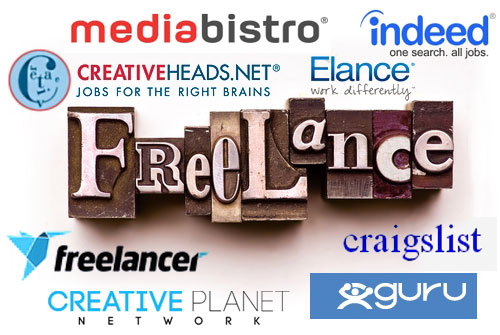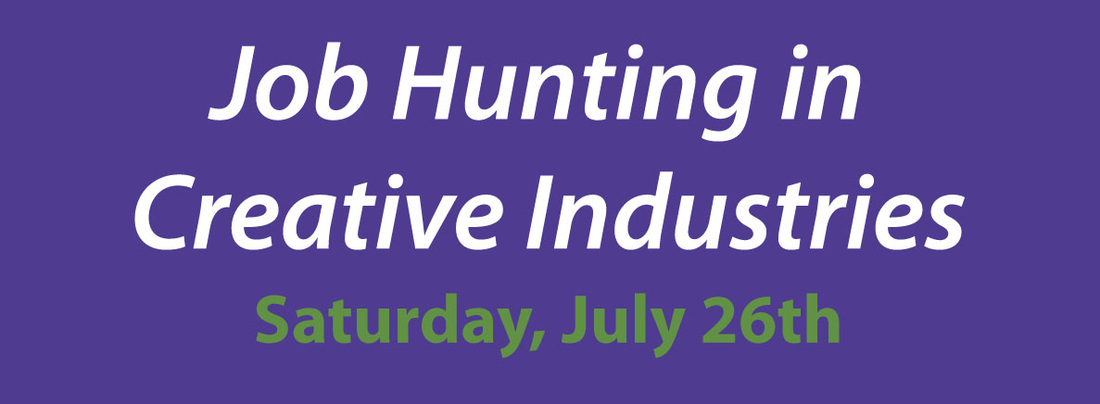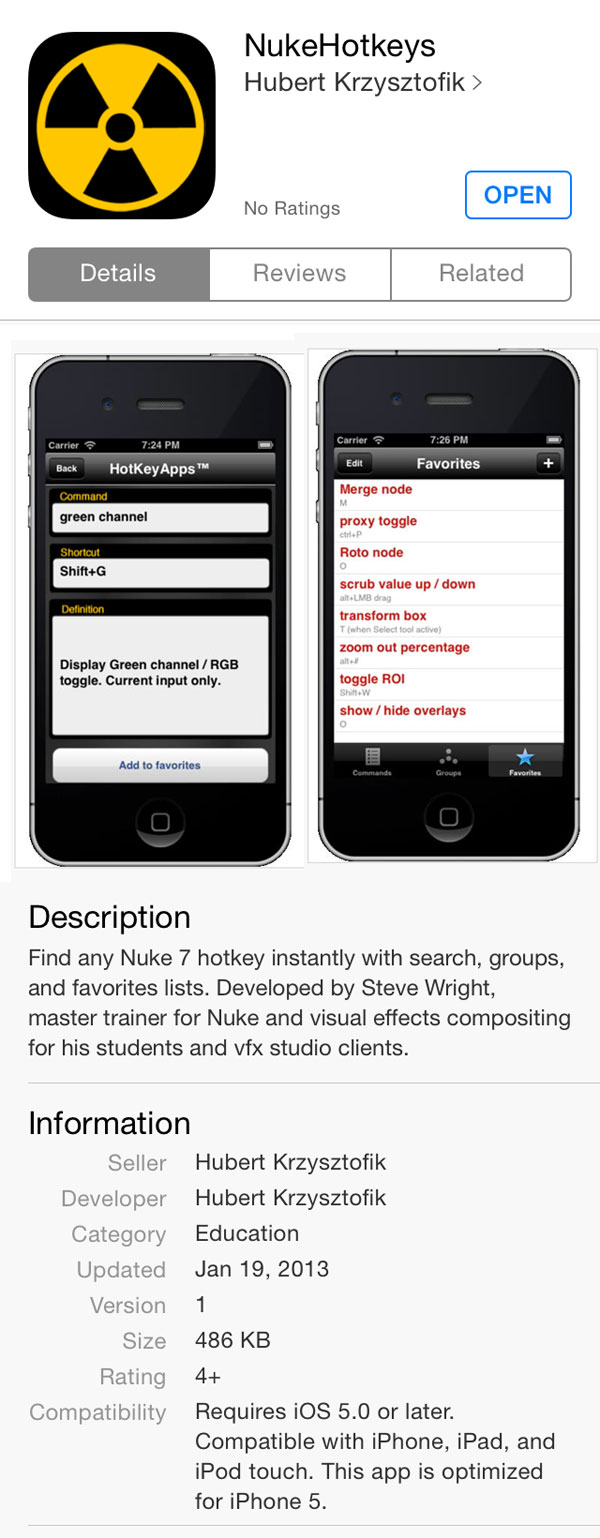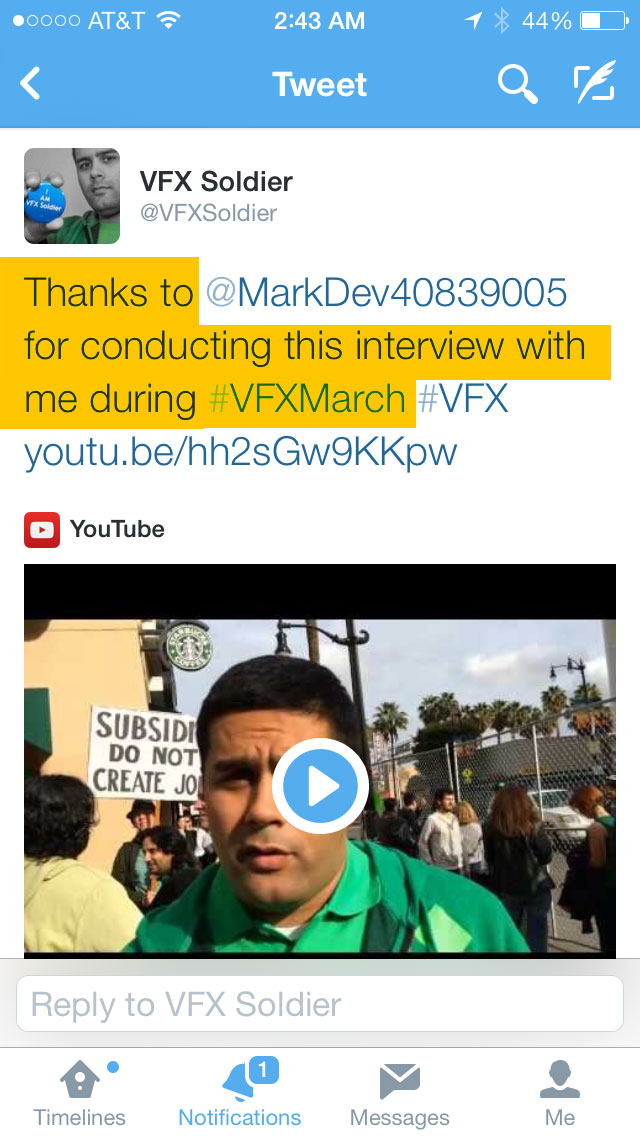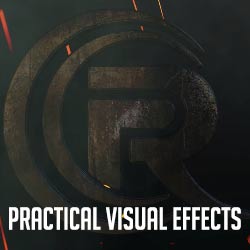FREE- Adobe After Effects for Beginners Webinar Available Online
Learning from the best
Ask a Video Pro is a webinar series where users can learn from the video production experts to help them get more out of their Creative Cloud tools. Every few weeks attendees log on to find out more about new new features, deepen their knowedge, or expand their skill set by learning a new application.
In 2014 over 2,000 people attended sessions and well over 20,000 watched recordings of them afterwards. Based on registration numbers, the most popular session this year was presented by Vashi Nedomansky (10 Tips for a More Efficient Editing Workflow), closely followed by Optimizing Your System for Peak Performance (by our own Todd Kopriva). Going user feedback, the biggest hit may have been How to Build a Successful Corporate Video Business, by Mark Drager and Kyle Wilson from Phanta Media, and there was a lot of love shown for Faster Filmmaking, as well. The most watched recording was Crafting the Perfect Image, by Will Read. And there were some sleeper hits, too, such as LOG and RAW Workflows (it must have been the sexy title that got them).
It has been a great year for Ask a Video Pro and it’s not over yet! You can still log on and watch (or re-watch) any of them. Below is a complete list of all the sessions presented this year, including descriptions and links to the recordings.
Still want more? We just posted our first webinar for 2015 and we’ll be posting more sessions early in the New Year. We also have a live panel discussion from the Sundance Film Festival coming up on January 23. If you have questions, or requests for topics or Adobe apps you’d like to learn more about in 2015, please let me know. I can be reached at @EricPhilpott
Watch This Webinar Now at
https://seminars.adobeconnect.com/_a227210/p2zfk48ogtp/?launcher=false&fcsContent=true&pbMode=normal
By Eric Philpott | December 19, 2014
POND 5 Introduces The Public Domain Project
 For years, searching for copyright-free content has required making a difficult choice: either spend valuable time digging through remote archives and clumsy websites, or spend valuable money to access media which supposedly exists for free in the public domain.
For years, searching for copyright-free content has required making a difficult choice: either spend valuable time digging through remote archives and clumsy websites, or spend valuable money to access media which supposedly exists for free in the public domain.
Pond5 is about to change all of that.
Today we’re announcing the launch of the Pond5 Public Domain Project: a comprehensive and ever-expanding collection of copyright-free multimedia content that’s accessible for free search, free download and free use.
Pulling An All Nighter- Dealing with Sleep Deprivation Naturally
Being expected to work all night without complaint is commonplace, in the freelancing industries. To make things worst, producers expect you to perform as well during your 20th straight hour, as you did on your first. But how do we make that happen?
THE SOLUTION- Be prepared physically before it happens.
What is Sleep Deprivation? “We have no idea what chemicals are produced by the body, during sleep, that make us feel rested.” explains Dr Thomas Devlin, Chief of Neurology at Erlanger Medical Center in Chattanooga, TN. “If we could identify what that compound was, we would be able to synthetically reproduce it and create a pill that people could take to make them feel rested. The best solution to sleep deprivation is to be physically prepared for it, or avoid it all together”.
STEP 1- Live a healthy lifestyle.
Exercise, making sure you are not overweight, not smoking and generally live a healthy lifestyle, will all contribute to make a sleepless night less exhausting. Also by simply adding a multi-vitamin and fish oil to your daily regimen will get remarkable results. Nothing else is really needed. Just like a soldier going into battle, a strong body will produce better results.
STEP 2- Hydrate and Caffeinate. Everyone knows caffeine can give you that boost you’ll need, but few understand that it is also a strong diuretic. Drinking too much coffee will dehydrate you, which in turn will make you feel tired. I suggest drinking one glass of water for every one cup of coffee. If you notice that you are drinking coffee but your eyes are particularly tired, it is because you are very dehydrated. Drink a couple glasses of water and that tired feeling will go away.
STEP 3- Exercise while working. Even 5 minutes of jumping jacks, push ups or any exercise that brings your heart rate up will have measurable results when you have hit the wall.
STEP 4- The Power Nap. When you sleep normally, it takes about 3 hours before we go into deep REM sleep which revitalizes the body. But when the body is exhausted, it kicks in to REM sleep almost immediately. A 15 minute power nap will have more effect than 3 hours of normal sleep. It’s best to nap about six or seven hours before you would normally go to bed. If you must take a late nap close to bedtime, make it a short one.
Step 5- Keep Your Brain Active- When you have hours of mindless work, turn on a movie, listen to music, play a podcast, talk with someone or do anything else you can to keep your mind alert. Day dreaming will turn into night dreaming and soon you may find yourself waking up on your keyboard with no idea how long you’ve been out.
Step 6- Don’t Eat, Graze. Large meals will cause blood sugar levels to peek and crash. Instead have small meals, every two hours. This will keep your blood sugar levels even and make your more alert.
Step 7- What About Energy Drinks- Don’t think energy, think Vitamin B intake. A simple B complex tablet, a 5 Hour Energy or other power drinks that are vitamin based are best. I find the weightlifter supplement N.O.-Explode works best for me. Not only does it fill the blood stream with a proper amount of vitamin B which invigorates me, but it also clears my head and makes me think better. Be certain to follow the manufacturer’s dosing instructions. Too much can make you jitter like too much coffee.
THE BEST SOLUTION- Avoid It- Make it clear to clients not only what your hourly rate is, but also that your rate turns into overtime after 10 hours and double time after 12 hours. When you have completed 10 hours of work, inform your client that you are going into overtime and ask them if you can continue working. Do the same at 12 hours. Company’s that work you overtime but do not paid OT are usually the same companies that pay late or never at all. Companies that asks you what your day or weekly rate is, are telling you in advance, expect to be treated poorly.
Finding Freelance Jobs- The Best Places To Look
Last week, I received a few emails from artists that were starting their freelance career and wanted to know the best sites to find freelance jobs.
The answer is simple. THERE ARE NO GOOD SITES TO FIND FREELANCE JOBS!
If searching for ads on job boards is your primary source for obtaining freelance work, don’t be surprised if you are sadly disappointed with the results. For every single ad placed on a job board, there are hundreds of artists who apply. The odds of you getting hired are slim.
The Solution- See and be seen, and let the jobs come to you.
There is a saying in sales, “It’s a numbers game”, which means the more people who see your work, the more work will find you.
Step 1- Linked In- Start by searching Linked In for other similar artists in your area. Review their profiles for a list of companies who have hired them. Connect with those artists and every one of their contacts. You will be surprised at how quickly you can get contact information for almost every HR person and producer who has been hiring in town. As you connect with people, you will notice that under contact info you will have access to that person’s telephone number, email, website and more. If you have less than 500+ contacts, then you have not even begun to take full advantage of all the valuable contact information available to you on Linked In. Using this method, I quickly obtain a list of over 3600 employers in the Los Angeles area alone.
Step 2– Create a List of companies you could work for. START NOW!. Create a spreadsheet that includes: Company Name, Persons Name, Title, Email, Telephone, and Additional Notes. As you add a company to your list, call that company. Tell the receptionist who you are and what you do and explain that you would like to email a resume and link of your work. Ask who in their organization you should send that to and what their email address is. Receptionists freely give this information out almost daily. This list of possible employers should be in the thousands, not hundreds.
Step 3– Review Each Company’s Website– Before contacting anyone directly; go to that company’s website. Not only should you review the company’s work, but also look under careers. Many times you will find positions available that are not advertised. Be sure to fill out any online applications to make sure you are in their database.
Step 4- Look at Job Boards, But Not For Jobs- Job boards are not very good for actually finding jobs, but they are excellent for find emails of people that regularly hire. Go to your favorite job board and look back for an entire year to see who was hiring. Understand that a person who is hiring a matte painter today, may be hiring a compositor or 3D artist tomorrow, so do not pass up employers just because the job description does not match your skills exactly.
Step 5- Go to Where the People Are– Someone once said to me, if you want to be a successful artist, go to where successful artists hang out. Conventions, meet ups, user group meetings, events, company open houses, road shows, other artist’s birthday parties are great places to make connections. Start getting recognized as a good artist by hanging out with other good artists. Not only is this is a great way to make new contacts and start building strong business relationships, but it’s fun too.
Step 6- Build Relationships through Facebook– Use Facebook as a tool to let people know who you are and what you have been doing. Make sure the ONLY information you are giving out on Facebook is industry related. Political opinions, personal information or even one drunken picture of you and your friends out on the town can ruin a years worth of work. I have two Facebooks. One for personal friends and family use and a second that is my professional Facebook.
Step 7- Make it Easy for Companies to Contact You- Put your cell phone number and email address EVERYWHERE. Your business card, your emails, your reel, your Linked In profile, your Facebook profile. I have seen so many people that have website with only an email form to contact them, and no phone number. When people are looking for an artist, they are looking NOW. Not when you eventually email them back. So make it easy for people to hire you by making your self easy to reach.
Step 8- Let People Know, You are Looking for Work– It may seem silly, but just telling people you are available and looking for work is a great way to get the ball rolling. Email everyone on your contact list shortly before each time you are becoming available. remember that a referral from a friend or colleague is better than any resume, cover letter or reel. So don’t be afraid to let people know you are available and looking for work.
Do you have a question or topic you would like to have addressed? Feel free to email me directly at jungle@grvfxguy.com
DreamWorks Animation Aiming Beyond Film
GLENDALE, Calif. — For months, DreamWorksAnimation has been working on a prototype for a product it hopes will change how the world’s children meet Santa each Christmas. Code name: DreamHouse.
At shopping malls that buy in — and two national operators already have, Forest City and General Growth Properties — Santa Claus will sit inside a 2,000-square-foot “cottage” with walls that are essentially giant video screens. Children will go on a virtual sleigh ride with Shrek before meeting Santa. No more waiting in line; appointments will be made by app.
“It’s an amazing, beautiful, big theatrical statement that represents our efforts to diversify into new areas,” said Jeffrey Katzenberg, DreamWorks Animation’s chief executive. “We’ve made bets, and now it’s about execution.”
Diversification has been Mr. Katzenberg’s mantra for at least two years, ever since an effort to sell his small studio ended without success. The need to become part of a larger company or expand into other businesses reflects a reality Hollywood is loath to admit: Movies by themselves are a slow- to no-growth business. A lasting film enterprise, at least in today’s marketplace, must have other engines.
DreamWorks Animation, one of moviedom’s last studios not tied to a conglomerate, has none of the buffers of, say, the Walt Disney Company, which can lean on consumer products, TV or theme parks if an expensive movie flops. (DreamWorks Animation, which is publicly traded, operates separately from Steven Spielberg’s privately held DreamWorks Studios, which has lately been having troubles of its own.)
Computer animation is no longer a sure thing, which has further motivated Mr. Katzenberg in his expansion effort. The company has had to take write-downs on three of its last four original films.
“How to Train Your Dragon 2” took in a hefty $50 million last weekend in North America.CreditDreamworks Animation/DreamWorks Animation, via Associated Press
Even success sometimes is not enough. “How to Train Your Dragon 2” took in a hefty $50 million last weekend in North America, but Wall Street wanted more. Shares fell 13 percent between Friday and mid-Monday, to $23.85, before making up ground to close at $24.73 on Tuesday.
Hence the importance of projects like DreamHouse, which Mr. Katzenberg also intends to introduce overseas. “The goal is to create annuities so we don’t have lumpy earnings,” said Michael Francis, DreamWorks Animation’s chief brand officer.
So far, the studio’s most prominent diversification efforts have involved television and the Internet. The company has contracts to produce a jaw-dropping 1,100 episodes of original cartoon programming for Netflix. Last year, the studio acquired AwesomenessTV, a thriving collection of YouTube channels focused on teenagers. On Monday, it introduced DreamWorksTV, a family-oriented YouTube channel.
Last year, 71 percent of DreamWorks Animation’s revenue came from new films, according to Anthony Wible, an analyst at Janney Montgomery Scott. Next year, he expects it to be closer to 48 percent. This rapid shift “is a key reason we like the company,” Mr. Wible said in an email. (Net income for 2013 totaled $55.1 million, an improvement from a loss of $36.4 million a year earlier).
Overlooked in Mr. Katzenberg’s expansion frenzy has been an aggressive move into consumer products. The studio, under the guidance of Mr. Francis, who spent his earlier career at Target, ultimately serving as chief marketing officer, has quietly built a hefty merchandising division. Eighteen months ago, the studio had 69 consumer products executives. Now there are roughly 180, and hiring continues.
“It takes boots on the ground and long-term planning that was just not happening before,” Mr. Francis said. “When I was at Target, Jeffrey used to call and ask why DreamWorks wasn’t as effective as its peers with licensing. And I would say, ‘Well, because you want retail to do all the work. You call me up and thump your chest about your latest movie and expect me to spend my money creating a strategy.’ ”
DreamWorks Animation has been able to move quickly in part by capitalizing on upheaval at Disney Consumer Products, which is across the street in this Los Angeles suburb. In 2011, Disney pushed out its merchandising chief, Andrew P. Mooney, who immediately started advising Mr. Katzenberg. (Mr. Mooney is now chief executive of the sports apparel company Quicksilver.)
Mr. Mooney’s replacement at Disney, Bob Chapek, carried out a bold overhaul that left dozens of employees looking for work. Mr. Francis has so far hired at least 70 former Disney employees. One of the most recent was Jim Fielding, former president of Disney Stores Worldwide. Mr. Fielding is now leading a September charge into stores by AwesomenessTV.
DreamWorks Animation’s merchandising onrush comes as Hollywood’s unsexy consumer products business starts to attract more investor attention. “Disney Consumer Products: World’s Most Valuable Afterthought?” read the headline of a March report from Todd Juenger, a Bernstein Research analyst. Mr. Juenger estimated that merchandise would be Disney’s fastest-growing unit through 2018, in part because of Mr. Chapek’s strategies.
On Monday, the International Licensing Industry Merchandisers’ Association released data showing that 2013 sales of film-, television- and celebrity-themed merchandise totaled $51.4 billion, a 4.3 percent increase from a year earlier.
Despite his determination to become a consumer products titan, Mr. Katzenberg faces some skeptics — namely analysts who wonder what kind of grip the DreamWorks Animation brand and stable of characters have on mothers who do much of the buying. Success will also require new movie and television hits.
“Having success in our core movie business is critical,” Mr. Katzenberg conceded. But he defended his brand and characters like Shrek the ogre, Po the panda and the penguins of “Madagascar.” “These characters are known throughout the world, and they are beloved,” he said. “Beloved.”
Mr. Francis said that efforts were underway to bring DreamWorks Animation to higher-end retail. The fashion designer Jeremy Scott, for instance, is working with characters for a line of clothing for young women; early concepts even included a “Shrek” bra. “Everything we are doing is carefully designed to make our brand continue to ascend,” Mr. Francis said.
Results of Mr. Francis’s various efforts began to enter the marketplace this month with the release of a tablet computer for children, the DreamTab, and a huge array of products tied to “How to Train Your Dragon 2.” (The first movie had one retail partner; the sequel has 70.) But DreamWorks Animation’s brand will become significantly more noticeable later this year, when a new in-house publishing unit begins to release books and experience-based products like the DreamHouse begin to roll out.
“We’ve just begun to scratch the surface with experiences,” Mr. Francis said.
Coming next year to London and then five additional cities is a permanent walk-through attraction called “Shrek’s Far, Far Away Adventure.” Other plans include licensing characters for an amusement park as part of the New Jersey Meadowlands megamall and a trio of indoor theme parks in Russia. There is also a shopping and entertainment complex in Shanghai called the DreamCenter.
“It’s a lot to bite off,” Mr. Francis said. “But we’re hungry.”
MPC Confirms It Will Take On Visual Effects for Disney’s ‘The Jungle Book’
Jason Merritt/Getty Image
The Moving Picture Co. has confirmed the whispers that it will be serving as lead visual effects house on Disney’s upcoming The Jungle Book.
Jon Favreau is directing the live-action/CG adaptation of the Rudyard Kipling story. An Oct. 9, 2015, release is planned. (Warner Bros. is also making an adaptation of The Jungle Book, with Andy Serkis set to direct).
Technicolor-owned MPC has been busy, after recently completing work on Godzilla, X-Men: Days of Future Pastand Maleficent. Upcoming credits include Exodus, Cinderella, Into The Woods, Frankenstein, Night at the Museum 3, Fast & Furious 7and Batman v Superman: Dawn of Justice.
MPC is headquartered in London and also maintains feature effects facilities in Vancouver and Montreal (as well as bases for commercial work in Los Angeles and New York). The company believes it could have up to 2,000 employed across these facilities by the end of the year.
Technicolor also recently acquired Toronto-headquartered VFX house Mr. X, which is focused on television work.
Reposted from The Hollywood Reporter 1:01 PM PDT 6/19/2014 by Carolyn Giardina
CONDUIT SEMINARS OPENS THEIR DOORS
COMPANY TO PRESENT SEMINARS AND WORKSHOPS FOR PRODUCTION PROFESSIONALS
LOS ANGELES, CA, June 16, 2014 – Conduit Seminars announces the launch of their company. Co-founded by industry insiders Debra Blanchard Knight and Pam Hogarth, Conduit Seminars will present seminars and workshops for the entertainment industry aimed at helping production professionals get the information and tools they need to succeed.
The first seminar, Job Hunting in Creative Industries, will take place on Saturday, July 26th, at Otis College of Art and Design.
“The world of production that we’ve known for decades has been turned on its head in the past five years. People who have had outstanding careers are now at a loss as to what to do next,” says Pam Hogarth. “Our goal is to take all of the knowledge Debra and I have gained over the years and present it in ways that will provide practical guides for people.”Job Hunting in Creative Industries will be held from 1pm to 5pm on Saturday, July 26th, in The Forum at Otis College of Art and Design, at 9045 Lincoln Boulevard, Los Angeles, CA. Topics to be covered include: preparing your marketing package, finding potential jobs and interviewing with confidence. Registration is $275 and can be done online at http://conduitseminars.com.
“We’re so excited about sharing what we know with the wonderfully talented people who make up our industry,” says Debra Blanchard Knight. “They have so much to offer, but frequently don’t know how to survive in these crazy, changing times. We’re here to offer some sanity and guidance.”
With a cumulative total of over 40 years of creative team-building experience, Pam Hogarth and Debra Blanchard Knight have helped literally thousands of individuals build successful careers in animation, visual effects, games, special venue and film production.
Seven years ago, Blanchard Knight founded Fringe Talent, a recruiting agency that specializes in building teams for animation, visual effects, production and special venue. Before that she worked for companies that include Blue Sky Studios, IDT/Starz, DreamWorks Animation and ILM.
 Hogarth has worked in visual effects for 30 years, 25 of which were in education. She was one of the first employees at Gnomon School of Visual effects and was instrumental in building it into the premiere institution for vfx career education. She has also lent her green thumb to the Visual Effects Society as a member of the Executive Committee, Board of Directors and many, many committees. Both women have spoken and taught at multiple colleges, universities and conferences, here and abroad.
Hogarth has worked in visual effects for 30 years, 25 of which were in education. She was one of the first employees at Gnomon School of Visual effects and was instrumental in building it into the premiere institution for vfx career education. She has also lent her green thumb to the Visual Effects Society as a member of the Executive Committee, Board of Directors and many, many committees. Both women have spoken and taught at multiple colleges, universities and conferences, here and abroad.
How To Get Paid, Not Played
 There is nothing more frustrating than working and not getting paid.
There is nothing more frustrating than working and not getting paid.
The Solution- Prevent problems before they happen. Several ways to do this include:
Get a deposit– Before you start a new project, make sure to require a 50% deposit in advance to begin production. When a client has paid a deposit, you will get their attention throughout the whole project, because they have a vested interest to complete the project and get their money’s worth. A client who has not paid a deposit can walk away at any time without loosing anything. GET A DEPOSIT!
Define The Project Up Front– Be sure to define what the job is on your invoice, so that if the client adds work to the project it is understood that would require additional payment. When additions to the project crop up, follow up with an email which explains the additional costs and get the client to respond to that email before starting work on the changes.
Have a written contract for every job. Many artists do not feel comfortable asking for contracts, but it is the best way to avoid problems in the long run. It is important to define the work going to be performed completely, delivery dates and payment terms. If you can not get the client to sign a contract, at least get them to reply to an emailed deal memo which describes all the details.
Make your invoice complete- Many times large corporation will delay payment and after 30 days by suggesting invoices were not complete. Be sure to give all your invoices a number. Include your name as you would want the check to read, mailing address and social security number, and be very clear as to the payment terms.
What To Do When Things Go Bad
The best practice is to talk to the client first before taking any legal actions. Many times a client is dealing with cash flow issues and needs to be paid by their client before they can pay you. Making statements like “that’s not my problem” will get you no where. Revealing your own personal problems as a reason your client needs to pay you will encourage that client to lose respect for you as well. It is best to ask the client what their situation is and ask the client when they can pay you. Being patient will usually resolve the problem and build your relationship with that client. Remember you want as many long term clients as possible, so it is important to be as flexible as possible.
Small Claims Court– When all else fails, small claims court is always an option, but never your best option. Winning your case does not mean the court system will act as your collection agency to collect the funds.
Labor Board– Regardless of whether or not you have signed an independent contractors agreement or not, many state laws say that if a client requires you to work at their facility, gives you specific hours to work and provides you equipment to do the job, legally you are their employee and the Labor Board will stand up to protect you including getting you interest for late payments.
Deduct it- If you have exhausted every avenue and still have not gotten paid, you can write the bad debt off your taxes as a bad business debt. For more information see http://www.irs.gov/publications/p535/ch10.html
Do you have any other suggestions on how to get paid? Write it in a comment below.
California Film and TV Tax Incentive Bill Passes State Assembly
With no dollar amount attached, it passes another hurdle — next going on to face increased scrutiny in the state senate and then to the governor.
Legislation to expand and extend incentives to keep film and television production in California passed a major milestone.
As expected, the California Film and Television Job Retention and Promotion Act of 2014 was approved by the state assembly Wednesday by a unanimous vote of 71-0.
The legislation, authored by Assemblymen Mike Gatto (D-Los Angeles) and Raul Bocanegra (D-Pacoima) had more than 60 co-authors.
However, there is still no specific amount of money the state will put up for the new legislation, which would replace the current program that allocates $100 million a year, which has not proven to be enough to stem the flow of production to other states and countries that offer even greater incentives.
A source in Sacramento said that the amount will be determined in coming weeks after the budget priorities become clearer. Advocates are hoping to see the amount authorized increased by two to four times, but that may be too ambitious. There was a legislative analyst report that said the program doesn’t return as much in tax dollars as backers claim, but Gatto has said that did not consider the local tax revenue or the jobs that are created.
“We can’t sit by and watch a $17 billion dollar a year sector of our economy leave California,” said Bocanegra. “This expanded and improved program will go a long way toward making California more competitive with other states’ programs.”
Between 2004 and 2012, California lost more than 16,000 film- and television-industry jobs, according to the U.S. Department of Labor, resulting in more than $1.5 billion in lost wages and economic activity.
“I remember when our communities lost all the good aerospace jobs,” said Gatto. “Losing major employers really harms local families and our state economy. This effort is a rare example of government taking proactive steps to ensure well-paying jobs stay in our communities.”
The bill next goes to the state senate where it already has more than a dozen co-sponsors, but also faces a much more skeptical look at the value of the program. Some senators, especially those from northern California, question whether too much of the benefit goes to the Los Angeles area. To try and respond to that complaint, this bill for the first time includes an additional 5 percent incentive for productions outside the L.A. area.
The proposed bill also, for the first time, makes big-budget movies, network TV shows and music for movies and TV eligible for financial incentives.
On June 1, the California Film Commission will take applications for the next year’s incentives. Those will all be used up by the end of the day, although some will go on a waiting list in case the movie and TV shows chosen in a lottery do not get made.
If the bill makes it through the senate, then it will go to Gov. Jerry Brown, who has not taken any public position as of yet on whether or not he will sign it into law. However, Brown has held discussions on the bill recently, and in the past has signed other tax incentive bills enacted since the program began in 2009.
The California Film and Television Production Alliance — a coalition of guilds, unions, producers, small businesses and associations that have worked toward passage of this bill — said in a statement: “The strength of the unanimous vote demonstrates the Assembly Members’ clear understanding of the vital economic importance of the motion picture industry to California and their determination to return this state to a competitive position. This could not have been achieved without the dedication of AB 1839’s authors, and the unwavering support of 67 co-authors. Our industry has been a vital part of California’s heritage and we want to continue to be part of the Golden State’s economic vitality in the 21st century. This vote puts us one step closer to that reality.”
“This unanimous vote of support from the Assembly provides strong momentum as we look ahead to the Senate and the Governor’s desk,” said Los Angeles Mayor Eric Garcetti. “California needs jobs, and this legislation would generate thousands of middle class jobs across our state.”
Reposted for The Hollywood Reporter 3:17 PM PDT 5/28/2014 by Alex Ben Block
Sony’s VFX House Imageworks Moving Headquarters to Vancouver
Future Imageworks and Sony Pictures Animation production — including “Angry Birds,” “Hotel Transylvania 2″ and the untitled Smurfs movie — will be handled entirely in British Columbia.
Sony Pictures Imageworks – well known as the lead VFX house for the Spider-Manfranchise including The Amazing Spider-Man 2 – is moving its headquarters from Culver City to its Vancouver operation, meaning that all future Imageworks and Sony Picture Animation production will be handled entirely under one roof in British Columbia.
As part of its plans, the company said it intends to relocate to a new 74,000 square foot space during 2015, which would have capacity for up to 700 artists.
The decision underscores the VFX industry’s retreat from California to cities such as Vancouver that are attracting Hollywood productions with generous incentives.
Imageworks, which initially opened its Vancouver base in Yaletown during 2010, has been steadily growing its work force in the incentive-friendly city, while shrinking its Los Angeles presence. Randy Lake, executive vp and general manager of Sony’s digital production services unit, told The Hollywood Reporter that it would not be immediately clear how many of the Culver City staffers will choose to consider relocation.
Having recently finished work on The Amazing Spider-Man 2 and Warners’ Edge of Tomorrow, the Vancouver operation has a slate of upcoming projects including Disney’s Guardians of the Galaxy (Aug. 1), Columbia’s Pixels (May 2015), Rovio’s Angry Birds (July 2016), Sony Pictures Animation’s Hotel Transylvania 2 (September 2015) and the Untitled Smurfs movie (August 2016). It is also expected to continue its work on theSpider-Man franchise with The Amazing Spider-Man 3, which is slated for a June 10, 2016 release.
Last year, during the production of The Amazing Spider-Man 2, staff in Vancouver topped 350. That has since dropped but Lake expects it to reach that number again by January, as the company ramps up for the aforementioned Sony Pictures Animation features as well as one not-yet-disclosed project.
The new Vancouver space, which the company expects to open by next April, will have capacity for up to 700 artists in the downtown area’s Cadillac Fairview Pacific Centre.”It’s a big vote of confidence on behalf of the studio,” Lake said of Sony’s plans for the VFX business.
According to the company, some Imageworks staff will remain in Culver City, at least for the foreseeable future. That includes Ken Ralston, the company’s four-time Academy Award winning senior VFX supervisor, as well as CTO/VFX supervisor Rob Bredow (Cloudy With A Chance of Meatballs) and VFX supervisorsDaniel Kramer (Edge of Tomorrow), Jerome Chen (The Amazing Spider-Man 2), Scott Stokdyk (Oz The Great and Powerful), Jay Redd (Men In Black 3) and Pete Travers (Cloudy With A Chance of Meatballs 2).
Sony Pictures Animation’s development team — an estimated 125 employees — are also expected to remain in Culver City, though animation production will be handled in Vancouver. Columbia’s The Interview, opening Oct. 10, is expected to be the last production to be completed in Culver City. (Following completion of its work on Spider-Man 2, Imageworks shut what was its third base, in Chennai, India.)
Jason Dowdeswell will continue to lead Imageworks’ operations in Vancouver as vp of production operations. New to his team are Mark Breakspear, as a VFX supervisor; and Shauna Bryan, who will serve as vp, new business and production. Both arrive from similar roles at Method Studios’ Vancouver base.
Bryan’s background includes 10 years with Vancouver-based Rainmaker, with three years as executive producer/head of business development. Breakspear’s credits as visual effects supervisor or artist include Seventh Son, Thor: The Dark World, Elysium and The Twilight Saga: Breaking Dawn Part 2.
Like Imageworks, VFX houses Industrial Light + Magic, Digital Domain, MPC and others have opened Vancouver operations in recent years. “We initially [moved to Vancouver] to take advantage of tax incentives,” said Lake. “But we have had phenomenal success with great talent. It’s become a hub.”
Pointing to passage on Wednesday of the California Film and Television Job Retention and Promotion Act of 2014 — legislation to expand incentives to keep film and television production in California — Lake added, “I’m hopeful the state increases its competitiveness. There won’t be any hesitation on our part to continue to work in California (as well as Vancouver).”
The current VFX business model and impact from competition driven by production incentives, however, is taking its toll on many artists, who are vocal about calling for change. Rallies were held on Hollywood Blvd before both the 2013 and 2104 Academy Awards.
Reposted from The Hollywood Reporter 6:00 PM PDT 5/29/2014 by Carolyn Giardina
FACEBOOK’S NEW FEATURE HAS THOROUGHLY CREEPED OUT!!!
Facebook recently rolled out a new feature that’s leaving some users speechless and others running to sign a petition to have it removed, news.com.au reports.
The social network’s new quirk allows its mobile app to turn on your smartphone’s microphone, listen in on what’s around you. Facebook identifies the music or TV shows it hears, and can tell the world you’re currently “Listening to Iggy Azalea” if it hears you bumping “Fancy.”
The opt-in feature has many users creeped out. More than half a million have flocked to sign a sumofus.com petition to have the new gimmick axed from the app.
“Tell Facebook not to release its creepy and dangerous new app feature that listens to users’ surroundings and conversations,” the petition urges. “Facebook says it’ll be responsible with this feature, but we know we can’t trust it.”
At a time when privacy concerns run rampant Facebook’s new feature seems to go against the trend. In May Microsoft announced you’ll be able to buy an Xbox One without the similarly creepy always-on Kinect watching and listening to your every move.
The sumofus.com petition is a little less than 200,000 signatures away from its goal: 750,000. Perhaps if it reaches that mark Facebook will actually listen to its users.
FEAST OR FAMINE- Learning How To Ride The Freelance Wave Part 5- BREATHE
I remember the first year I began freelancing. The phone was always ringing with more work than I could take on. I was always working two jobs, and the money was just rolling in. I was invincible! I was finally a success!
When July came, the calls for work just stopped and suddenly everything came to a screeching halt. I thought that I had done something wrong. Maybe there really was a “Black List” and somehow I was on it. I worked all day and all night looking for new work with no results. I couldn’t sleep and my nerves were shot. This lasted for 6 weeks.
And then suddenly, the phone rang and I was back to work. Driving into my new job, there was only one thing I could think about. How completely exhausted I was. After 5 months of double shifts and 6 weeks of panic, I never took a break to refresh my batteries.
The Solution- Don’t forget to Breath.
After an intense work schedule it can be challenging to just relax and decompress. You may experience an urge to jump right in and start searching for your next job. It is important to understand that your mind and body need a moment to recover.
Between jobs, I find the best way to recover, is by doing some type of physical activity that requires my mental attention as well. When I am not working, I like to do martial arts. I always go into a session feeling stressed and exhausted. But I always come out feeling relaxed and rejuvenated.
Find something that can help break the spell and take you away from the frustrations we all encounter as we live the freelance life. Sports, museums, travel or any other activity that requires both body and mind, will help to restore your strength and will get you prepared mentally for your next freelance challenge.
Remind yourself that the phone can ring at anytime and when that happens, you’ll be back to the grind.
Allow yourself a moment to just breathe.
FEAST OR FAMINE- Learning How To Ride The Freelance Wave Part 4- BUDGETING FOR FREELANCERS
The freelance lifestyle, in its nature, is a series of constantly changing variables. Although you are presented with many freedoms, you are in control of very little. Many freelancers find it difficult to maintain a sense of stability in this ever changing environment. And the biggest problem seems to always be finances. How can you setup a budget when you have no idea what you are going to make?
The Solution- Rather than setting a budget for how you are going to spend your money, try focusing on how you are NOT going to spend money.
Step 1- Live Off Last Months Income- Setting up a budget based on what you made last month, immediately creates stability. Any checks you receive this month go into an envelope and do not exist until next month. You will not be tempted to spend what is not cashed.
Step 2- Start By Reviewing Your Expenses- If you can, never pay cash for anything. Instead, write a check or use a debit card. This will make it much easier to analyze where every dollar went. Start by make sure you have online banking. Each month, copy all your activity into a spreadsheet and break down all your expenses into 3 groups:
1) Reoccurring Monthly Expenses (rent, wireless, telephone, cable, internet, insurance)
2) Variable Monthly Expenses (food, gasoline, pharmacy)
3) One-Time Non-Essential Expenses (entertainment, clothes, music downloads)
Establish a budget for each of these categories.
Example: Reoccurring Monthly Expenses= $4500
Variable Monthly Expenses= $600
One-Time Non-Essential Expenses= What ever is leftover
Step 2- Get 4 Bank Accounts- Setting up 4 different bank accounts will make it easier to prevent yourself from over spending. You will need a business expenses checking account, a personal checking for reoccurring and variable monthly expenses, a second personal checking for One-Time Non-Essential Expenses (aka: walking around money), and finally a savings account for taxes.
All income made last month is deposited into your business expense account (used to fund current projects or invoices due). Once a month write a check to your personal checking to pay for your reoccurring and variable monthly expenses (rent, electricity, internet, cable, telephone, insurance). Next, deposit 10% of your income into a saving account to cover taxes. After review your personal spending in step 1, write a second check for your second personal account. This money will determine how large you will be living this month. It is almost always certain that this money will not be enough and you will be tempted to cut into your savings and business account. DON’T!!!
You will be surprised how many things we do not really need. Prevent overspending by carrying only 1 debit card from your personal spending account. NEVER carry a credit card or debit card associated with your business account, monthly expenses account or savings account. DO NOT link your personal spending account debit card with any other accounts. The more difficult you make it for you to touch your other moneys, the more peace you will have in the long run.
Step 3- Plan your social calendar. Last year, my six year old went crazy for Toys-R-US. He associated buying new things with happiness. So I created a theme for the summer “A Free Summer of Fun”. Everyday, we did something cool that cost me nothing. We went to the beach, story time at the local library, free soccer camp, art festivals, concerts in the park, movie night in the park, hiked in the mountains, free days at museums, kids-eat- free days at restaurants.
Open your local newspaper’s calendar section and make a monthly social calendar that will involves the most amount of fun for the least amount of money. If you’re a single guy, your girlfriend will love your ingenuity.
Next evaluate where all your expenses are going. During the famine times, most artists get killed by the unexpected or unknown expenses.
For example: Do you have a child in elementary school? There are a huge amount of birthday parties. A $20 gift to 4-5 parties per month adds up to over $1200 by the end of the year.
You need to work these extra expenses into your budget. By reviewing all your expenses on a monthly basis, you will be able to develop a realistic monthly budget and find it easier to work with.
Want more ideas about Surviving The Freelance Jungle? Sign up for our mailing list now.
A TRUE STORY
TMB bank have launched a new brand vision “Make THE Difference” by making a film to inspire people to start thinking differently. With a hope that they will start to Make THE Difference to their own world. It doesn’t have to be big, but a little can create positive changes. This film is based on a true story. In 1986 a football team that lived on a little island in the south of Thailand called “Koh Panyee”. It’s a floating village in the middle of the sea that has not an inch of soil. The kids here loved to watch football but had nowhere to play or practice. But they didn’t let that stop them. They challenged the norm and have become a great inspiration for new generations on the island.
Client: TMB Bank Public Company Limited, Thailand
Advertising Agency: Leo Burnett Group Thailand by Arc Worldwide
Creative Director: Sanpathit Tavijaroen
Art Director: Park Wannasiri
Copywriter: Puttipong Pattanapongsagorn, Chanwit Nimcharoen
Producer: Sompetch Nuntasinrapachai
Account Service: Suthasi Sukpornsinchai, Phatarada Tritiprungroj
Directed by: Matt Devine of The Glue Society
D.O.P: Geoffrey Simpson
Producer: Alice Grant
Production Company: Revolver Film
Editor: Dan@ The Editors, Sydney
Sound Production: Jingle Bell Bangkok
A NEW BIG SCREEN REIMAGINING OF BATTLESTAR GALLACTICA IS RAMPING UP AT UNIVERSAL
A “Battlestar Galactica” movie is coming – just don’t expect it to resemble the TV show.
Universal has hired writer Jack Paglen (“Transcendence”) to pen the screenplay for a “complete reimagining” of the sci-fi franchise, according to Variety. The property was previously pegged for a big-screen version in 2009 with director Bryan Singer, though the “X-Men” helmer doesn’t appear to be attached to this new iteration.
Created by Glen A. Larson, the original “Battlestar Galactica” series ran from 1978-1979 on ABC. It went on to spawn a number of franchise follow-ups including the low-rated spin-off “Galactica 1980,” the acclaimed 2004-2009 reboot that ran on the Sci-Fi (now Syfy) channel, the short-lived prequel series “Caprica” and the 10-episode webseries “Battlestar Galactica: Blood & Chrome,” which aired as a two-hour movie on Syfy last year. The crux of the futuristic world depicted in the television shows centers on a long-running war waged between humans and a hostile cybernetic race known as the Cylons.
Read more at http://www.hitfix.com/news/a-big-screen-reimagining-of-battlestar-galactica-is-ramping-up-at-universal#tCeUpeLyxcUrE9mo.99
NAB: AUTODESK UNVEILS SMOKE 2015- for $195 per month!
(Las Vegas, Nevada–April 7, 2014) Autodesk, Inc. unveiled the latest version of its powerful professional video editing software Autodesk Smoke 2015 at the National Association of Broadcasters Convention (NAB). In addition to significant new creative tools and performance enhancements, Smoke 2015 will soon be available as a Desktop Subscription, so customers can access the software on a pay-as-you-go basis for the first time.
“When Autodesk launched the ‘radically redesigned’ Smoke two years ago at NAB, we made a commitment to bring high-quality effects to editors in post, video production and corporate branding. And Smoke 2015 delivers on that promise,” said Chris Bradshaw, senior vice president, Autodesk Media & Entertainment. “Smoke 2015 not only features highly-requested new creative tools and improved workflows with industry-standard tools such as Final Cut Pro, but also an even easier and more affordable way for small studios to get started with the software.”
Smoke 2015, a professional video effects and editing tool for Mac-based studios, now features 3D Tracker, a new Timeline FX workflow, added hardware support and optimization for the new Mac Pro running OS X Mavericks and better interoperability with Final Cut Pro X.
“For us, Smoke is a fantastic tool. I love the one place solution that Smoke offers; it saves hours of production time. We use Smoke as our main tool on music videos, tour visuals and motion graphics – from Madonna to The Prodigy to MTV. I want Smoke on every desk in my studio,” said Eugene Riecansky, creative director, Rockstar (UK).
Key Features
- New re-architected Timeline FX offers new effects capabilities for editors – such as direct access to the Action 3D compositing environment as a segment-based effect
- New timeline-integrated 3D tracker allows editors to match original camera movements in a clip in order to realistically add new elements: video layers, text or 3D objects
- Improved support for Blackmagic DesignLink card and UltraStudio for Thunderbolt devices and extended video IO support for AJA Video Systems to offer dual stream stereoscopic output
- Improved integration with Final Cut Pro X that supports more timeline and effects metadata for a fast, high fidelity project transfer between the apps. In addition, Smoke sequences can be exported as XML with accompanying QuickTime media files.
Pricing and Availability
In these competitive times, software accessibility and flexibility become ever more important especially to start-ups, freelancers and very small businesses, which make up the majority of new Smoke customers. Autodesk polled a sample across the professional video market and 68 percent responded that term-based software licensing is a great option. Smoke 2015 will soon be available via monthly, quarterly and annual Autodesk Desktop Subscription plans; customers who commit for a year save more than $500^. Smoke 2015 Desktop Subscription will be available starting May 8, 2014, on the Autodesk eStore for $195 SRP/month, $545 SRP/quarter and $1,750 SRP/year.
Get Connected
For features, benefits and tutorials, visit the Smoke product center, join the Smoke community, visit the Smoke Learning Channel (which boasts over one million cumulative views), friend us on Facebook, follow @Autodesk_ME on Twitter and join the #AutodeskSmoke conversation. Smoke 2015 will also be featured at theLas Vegas SuperMeet on Tuesday, April 8 at the Riviera Hotel and Casino and on the Autodesk NAB booth SL #3319.
^The $500 savings is based on the SRP of an annual Desktop Subscription plan for Smoke 2015 compared to purchasing a monthly Desktop Subscription plan.
*All SRPs shown are U.S. pricing only. International pricing may vary. SRPs are for reference purposes only. For non-eStore license purchases, the actual retail price is determined by your reseller. Autodesk Subscription plans are subject to additional terms, and all plans and benefits may not be available for all products and/or in all languages or geographies.
re-posted from Creative Cow- http://news.creativecow.net/story/875253
THE STATE of LA’s FILM INDUSTRY
 REPOSTED FROM http://www.backstage.com/news/state-ls-film-and-tv-industry/
REPOSTED FROM http://www.backstage.com/news/state-ls-film-and-tv-industry/
By Sean J. Miller | Posted March 13, 2014, 3 p.m.
California performers may soon face a dilemma. Acting jobs are migrating away from the Golden State to regional production hubs in Louisiana, North Carolina, and Georgia. The question for performers is whether to pack up and follow them.
“If you’re having trouble getting in rooms in L.A. and you’re open to moving, or you have some sort of connection to the Southeast, then you’re better off moving to a hub like New Orleans or Atlanta and taking advantage of this market,” said Chase Paris, an Atlanta-based casting director with Feldstein Paris. “Out here, you’re at least auditioning. If you’re in L.A. and not auditioning, there’s no point being there.”
Paris said he doesn’t see marquee talent relocating, “but people who have some solid credits, some acting ability, who maybe aren’t getting a lot of opportunities out west will come here and really get to flex their muscles a little more.”
It’s a growing trend.
A new report found that California lost some 16,000 entertainment industry jobs between 2004 and 2012.
“The single biggest problem isn’t simply the issue of losing jobs, it’s the amount of work actually generated—the number of people who would still consider themselves to be actors but cannot find consistent work has jumped up,” said Kevin Klowden, director of the Milken Institute’s California Center and co-author of the jobs report.
With that in mind, California Assemblymembers Raul Bocanegra (D-Pacoima) and Mike Gatto (D-Los Angeles) have introduced legislation to revamp the state’s film and television tax credit program. But an impediment to the legislation is the cloud hanging over the program’s former champion, state Sen. Ron Calderon (Montebello).
The Democrat was recently arraigned on bribery charges stemming from a sting in which an FBI agent posed as a film executive, offering bribes in exchange for changes to the incentive. Calderon announced March 2 that he’s taking a leave of absence from the Senate.
Bocanegra, the program’s new champion, dismissed the suggestion that Calderon’s pending trial will derail changes to the program. “We all recognize that the FBI could have selected any other type of industry in their investigation,” he told Backstage. “What I’m basically saying here is these are good-paying jobs in a signature industry.”
Klowden, of the Milken Institute, said that actors could help ease the passage of the bill. “The most important thing for actors, indeed for anyone working in the industry, is to get their story told,” he said. “The perception in Sacramento, when you say the movie industry, they think the big producers, the directors, the top stars. Obviously that’s not the vast majority of who works on productions.”
But critics of entertainment tax incentives call them a “losing proposition.”
If California augments its program, it will only get undercut by more lucrative incentives in other states, according to Joseph Henchman, vice president of the Tax Foundation, a conservative advocacy group.
“This isn’t going to create a permanent industry,” he said at a Feb. 27 event hosted by the Milken Institute. “I’ve never heard of any industry developed that way.”
Even industry executives who welcome changes to California’s program acknowledge they’re not cure-alls.
Still, Fred Baron, an executive vice president of feature production at 20th Century Fox, said enhancing California’s program could help keep romantic comedies shooting in Los Angeles.
“The talent lives here,” he said at the Feb. 27 panel. “And if you want to attract talent to your projects, whether it’s a director or a movie star, it’s nice to be home.”
FREEBEES- Red Giant Universe
Introducing Red Giant Universe — A community with access to an ever-expanding library of new FREE tools for filmmakers, editors, VFX artists, and motion designers. All Universe effects and transitions are GPU-accelerated, and work on both OS X and Windows, in After Effects, Premiere Pro, Final Cut Pro and more.
Help us shape the future of our Universe: Join the Free Beta and get started with 50 new effects and transitions right now.
FEAST or FAMINE- Learning How To Ride The Freelance Wave: Part 3- MIX IT UP WITH YOUR CLIENTS
On a recent trip to Las Vegas I watched a man playing roulette. On every spin of the wheel he placed $50 on the number 24. I asked him why he bet on only one number. He told me, “This way, I can play longer”. One time his number hit and he won $1750. For an hour more, I watched him continue to play the same number over and over, until eventually he went broke.
Many freelancers make the same mistake, choosing to work only in only one corner of the industry. Focusing strictly on film work, gaming, or commercials is great strategy when the work presents itself, but when it slows down, it’s easy to go broke waiting for the next job. If you don’t want to get stuck in the doldrums of the slow season you have to bet on more than one number.
The Solution- Diversify! For example, development of television pilots begins in January, so that’s when I take on most of my television VFX work. I start working on music videos in February as recording artists finalize their new albums, hoping to generate the buzz needed to attract audiences to their summer tours. Commercial work ramps up in September in preparation for the big holiday sales push. My corporate work gets busy in the spring as clients get ready for fall conventions.
By marketing myself to different clienteles throughout the year, I increase the chance of having work most of the time. I choose the Christmas and New Year’s season for a vacation, since everybody slows down over the holidays.
July is a great time to go to Vegas, just stay away from the tables.
For more ideas about Surviving The Freelance Jungle, sign up for our mailing list today.
DISNEY LAYS OFF 700 EMPLOYEES

Disney has laid off 700 employees from their gaming division today, as the New York Times reports. That’s 26% of their staff, and it’s mostly in mobile, social, and web-based gaming.1P
“These are large-scale changes as we focus not just on getting to profitability but sustained profitability and scalability,” Disney Interactive president James A. Pitaro told the Times.P
This follows a Wall Street Journal report that the company would cut hundreds of jobs last month. Last year, Disney closed down Epic Mickey developer Junction Point Studios and the iconic studio LucasArts.
THE VISUAL EFFECTS STUDIO MODUS FX CLOSES
 The Quebec team Modus FX has worked particularly special effects film The Avengers in 2012. ZADE ROSENTHAL PHOTO / DISNEY ARCHIVES AP
The Quebec team Modus FX has worked particularly special effects film The Avengers in 2012. ZADE ROSENTHAL PHOTO / DISNEY ARCHIVES AP
Last year, the Quebec visual effects industry has the wind in its sails with the arrival of several European studios. But she has lost an important member: Quebec company Modus FX, who did mandates including The Avengers and Now You See Me , closed its doors last Friday. Its 100 employees are expected to soon replace other studios, according to one of its leaders.
“There was a misalignment of the planets,” says Yanick Wilisky, executive supervisor, co-founder and one of the shareholders of Modus FX, a company of Santa Teresa founded in 2007. Until last month, Modus FX was one of 10 visual effects studios with at least 100 employees in Quebec.
Closure recalls that visual effects industry is not always a financial paradise. In the United States, two major studios, Digital Domain and Rhythm & Hues, placed themselves under the protection of the Bankruptcy Act for two years before being sold. “It’s such a fragile industry. In a good year, the profit margin is 8%. If you are one month without a warrant, you can not pay employees, “says Yanick Wilisky.
With hindsight, Modus FX has mismanaged its growth, says Yanick Wilisky. In 2012, the studio – majority owned by Yanick Wilisky and President Marc Bourbonnais – won two major contracts on the films This Is the End and Now You See Me “We took two contracts too big at the same time, said M. . Wilisky. Then we started out wanting to restructure us and we’ve never really been able to do. ”
At the same time, risk appetite was one of the reasons why Marc Bourbonnais and Yanick Wilisky, while employees in Hydride Technologies in Piedmont, to found Modus FX in 2007. “Other studios in Quebec are more conservative, said Wilisky. When we started, we wanted to take more risks. It gave us great successes, but it has also led us to the current situation. ”
http://affaires.lapresse.ca/ Originally Published March 6, 2014 at 4:30 | Updated at 9:58
Financial woes
The arrival of European studios like Framestore and Technicolor Montreal / MPC has nothing to do with the financial woes of Modus FX, says Wilisky. “They bring their own contracts, he said. Some employees have gone home, but it is marginal. Instead, I see a lot of positive aspects to their arrival. I would have liked to enjoy it, but I did not have time. ”
There are about a month, the leaders announced to employees that Modus FX experiencing serious financial difficulties. The number of employees increased to one hundred twenty.Leaders are trying to pay the wages of their employees until the end, unlike the Meteor Montreal studio, which went bankrupt in 2007 and has paid 70% of the unpaid wages of its hundreds of employees.
Modus FX also tries to replace its former employees. “I am convinced that everyone will replace.Framestore, MPC, Rodeo, Global Vision: there are plenty of studios in town that engage, “says Yanick Wilisky, 42, who wants to stay in the visual effects industry despite the end of Modus FX.“It’s disappointing, but I do not keep bitterness, he said. Nothing excites me as much as the art that the visual effects. I am very proud of my staff. Together, we made beautiful things. ”
LIFE AFTER PI- A look inside Rhythm and Hues

LIFE AFTER PI is a short documentary about Rhythm & Hues Studios, the L.A. based Visual Effects company that won an Academy Award for its groundbreaking work on “Life of Pi” — just two weeks after declaring bankruptcy. The film explores rapidly changing forces impacting the global VFX community and the Film Industry as a whole.
DIRECTED/EDITED BY: Scott Leberecht
PRODUCED BY: Christina Lee Storm
GRIP/LIGHTING/SOUND: Brian Sorbo
CAMERA OPERATORS: Nick Thiesen, David Andrade, Nick Donel
ASSISTANT EDITOR: Missy Wiechers
MUSIC BY: Kays Alatrakchi
ADDITIONAL FOOTAGE: Jud Pratt
ILLUSTRATOR: Jesse Mesa Toves
PUBLICIST: Scot Byrd
WEBSITE DESIGN BY: Chris Dalton
FEAST Or FAMINE- Learning How To Ride The Freelance Wave Part 2- REFER A FRIEND

If you are a freelancer, you constantly suffer from the ups and downs of the freelance workflow. It seems that companies all want you at the same time or not at all. We drive ourselves into the ground taking every job available because we are afraid that if we turn a client down, that they will call another artist and you will never hear from them again. This is a valid problem, but it is also a problem that is easily controlled.
The Solution- Develop a small network of fellow artists that you can refer business to when you are overwhelmed. When a client calls and you are already booked, you can control who they hire by referring them to one of your friends. Start by talking with a few other artists and explain to them that recently you have had several clients that had called and you were not available. Ask them if they would be interested in getting referrals from you.
Get their cell phone numbers and explain to them that you will be referring clients to them. Be clear that you expect the same in return. Be very selective as to whom you choose. They need to be as good as you, but not much better. They should be a good replacement for you. I have lost many long term clients by referring them to artists whose skill level was far superior to mine. Try to keep the group small, 2-4 at the most. Keep in touch with them and stay aware of their availability. After you have referred a few jobs to them, drop them from your list if they are not reciprocating.
By developing a group of fellow artists, not only do you drive business to yourself when work slows down, but you will notice that your clients will call you first knowing that you are a source of information and a solution to any of their problems.
Got a question or topic you’d like to discuss? Email Mark at jungle@grvfxguy.com
FEAST or FAMINE- Learning How To Ride The Freelance Wave: Part 1- HOW TO PREVENT THE WAVE
 One of the biggest problems many freelancers face is either having too much work or no work at all.
One of the biggest problems many freelancers face is either having too much work or no work at all.
Many of us never look for a job until we find ourselves without one. Once we have finished a job we have one evening of glowing in the satisfaction, of knowing that we did a great job, followed by waking up to the shear terror of not knowing where our next check is coming from.
The Solution- As a freelancer you must keep a constant flow of self promotion going consistently throughout the year. Obviously it is impossible to create new promotional efforts when you are slammed with work, so the solution is to create and maintain a 3 month marketing calendar and produce at least 3 promotional emails in advance so that when you get slammed with work, you already have a database of HR people and materials which to send them.
Step 1- Create A Database of Employers- This is essential, because if you are limiting your job search to only job boards, you are missing the majority of work that is out there. So start by creating a list of every company you could potentially work for. To do this, search on Linked In for similar artists in your area. By looking at profiles of other similar artists, you can get a list of all companies that have recently hired them. When you feel you have a full list of all companies, pick up the phone and call them. Explain to the receptionist what you do, and ask who you should send your reel to, and be sure to get an email.. This is very easy, because they get these calls everyday. If your list of companies is short, (100 or less) you will not get effective results. You will need to continue your search or widen your area of interest. If you work in a certain field, ( e.g. film) try reaching out to companies who do television, music videos, corporate videos, architectural companies, theme park design, medical illustration, etc. Your list should be well over 750 emails. Currently I have 3700 in the Los Angeles area alone.
Step 2- Get a Bulk Email Program- A bulk email program will allow you to enter a database of email addresses into the program, either by typing them out seperately or importing a list. Push one button and the program will send one email out to all of your contacts.
Step 3- Design 3 Creative Emails- These emails should look more like ads then text messages. They should include informational copy, and images of your recent work. You should begin by designing a format for all of your emails. This format should include your name and contact information and specific places for type and photos to be placed. By creating the format, you will begin to “Brand” yourself. HR people will begin to recognize your emails, and you are well on your way to building a professional relationship with these people. Before you know it, you’ll become “That guy/girl who….” When a need arises, you have a better chance of them calling you first, before they pull out their stack of resumes. Send out one of these emails every 4-6 weeks and replace it with a new email when free time allows it.
Step 4- Write a simple “Available for Work” Email- A week or two before you finish a job, send this email out to all your contacts. This is what I call “Rustling the Bushes” When you rustle the bushes, 2 weeks later, the snakes come out.
If you like this post, please subscribe to our weekly newsletter for more exciting ideas. And please share with your friends









